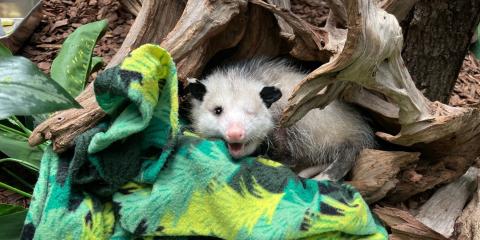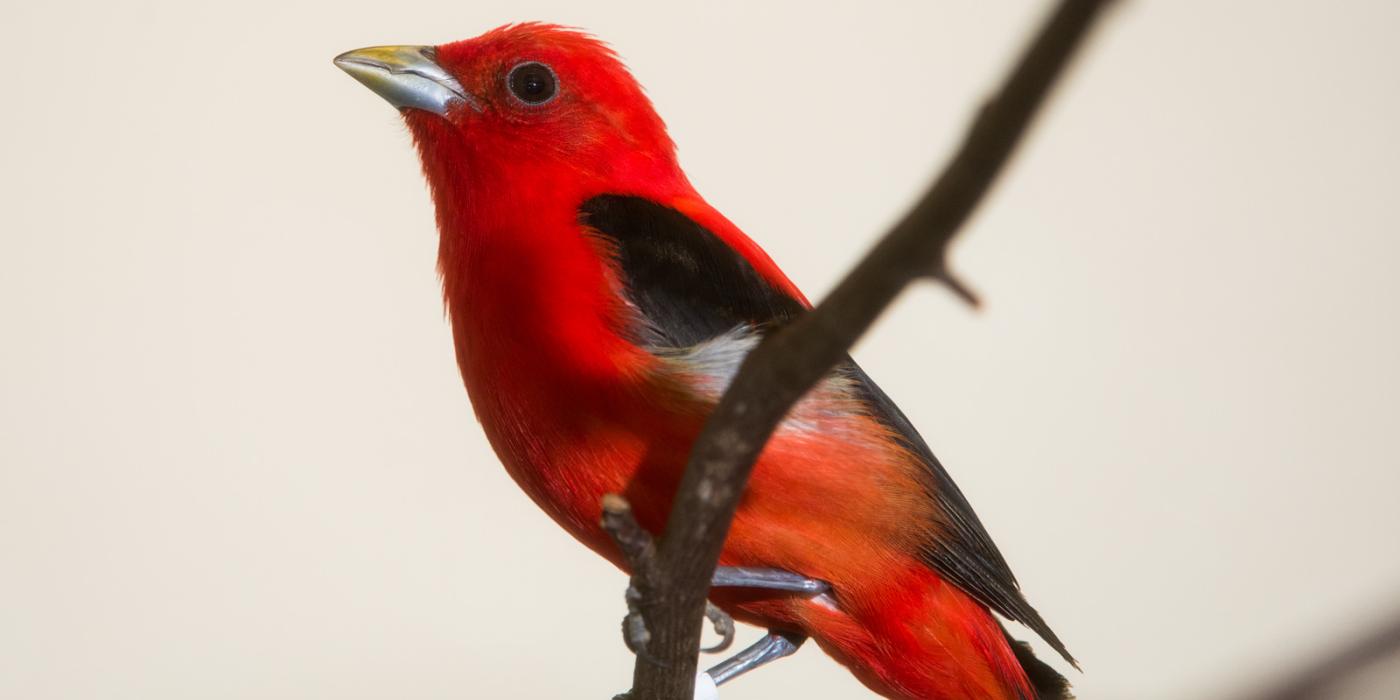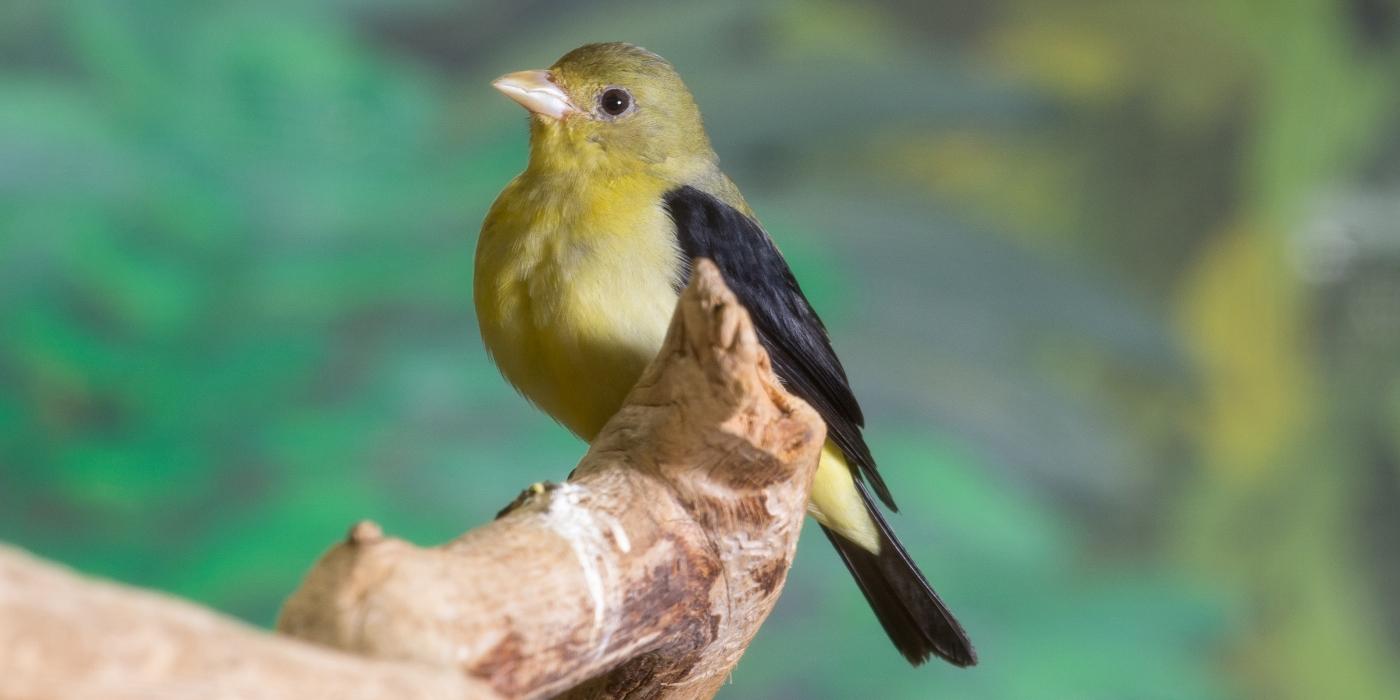This small songbird is one of many migratory birds found in North America. Adult males in spring and summer develop a striking red coloration, while females and nonbreeding males are olive-colored. They are one of the most difficult birds to find as they move high within dense forest canopies.
Physical Description
Medium-sized among songbirds, scarlet tanagers have thick rounded bills and heads that are relatively large for their body size. Adult males have brilliant red feathers with black wings and tails. Females and nonbreeding males are mostly olive-green, but with black wings and tails.
Size
scarlet tanagers are about 6.3-6.7 inches (16-17 centimeters) long with a wingspan of 9.8-11.4 inches (25-29 centimeters).
Native Habitat
In their breeding grounds, they inhabit large forested areas, woodlands, and semi-open areas like parks and gardens. In the winter, they are found in lowland forests near the Andean mountains.
Communication
During the breeding season both males and females sing, unlike the majority of songbird species. The female's song is softer and less harsh version than that of the male. When not singing, scarlet tanagers call out to each other with a "chip-burr" calls.
Food/Eating Habits
They eat insects and berries, often searching high among leafy trees or in low shrubs for their food.
Social Structure
These birds travel in mixed-species flocks on their migration to and from the South American forests and eastern North America. In their wintering grounds, scarlet tanagers form loose flocks with several other species of birds to forage for food. Males compete for territories with other males during the breeding season. Scarlet tanagers are monogamous throughout a single breeding season, with males and females pairing up to breed and take care of young. Individuals select different mates from year to year.
Reproduction and Development
Males arrive to their forested breeding grounds ahead of females, establishing their territory though song. Females build a shallow, open-cup nest made of twigs and grasses, where they lay a clutch of two to five eggs (but usually three to four) that are blue-green in color, sometimes with reddish-brown specks. Females incubate the eggs, which hatch after about two weeks. Both parents feed the nestlings which fledge the nest after a period of nine to 15 days.
Conservation Efforts
Like other species, the scarlet tanager is noted for being at particular risk of brood parasitism from the brown-headed cowbird. As a brood parasite, the brown-headed cowbird lays its eggs in the nest of a host species. The host parents treat cowbird eggs and young as their own which frequently hatch sooner. Cowbird young develop more rapidly and can push out eggs and young of the host nest as well as outcompete host young for parental feeding.
Help this Species
- Reduce, reuse and recycle — in that order! Cut back on single-use goods, and find creative ways to reuse products at the end of their life cycle. Choose recycling over trash when possible.
- Be a smart consumer. Choose products made with sustainable ingredients, such as Smithsonian certified Bird Friendly coffees, which support farmers striving to limit their impact on wildlife and habitat.
- Practice ecotourism by being an advocate for the environment when you’re on vacation. During your travels, support, visit or volunteer with organizations that protect wildlife. Shop smart too! Avoid buying products made from animals, which could support poaching and the illegal wildlife trade.
- Be a responsible cat owner, and keep cats indoors or under restraint when outside. Never release animals that have been kept as pets into the wild.
- Organize or attend a stream, river, lake or other waterway cleanup in your area to preserve aquatic habitats for local species.
- Avoid single-use plastics, such as plastic bottles, bags and utensils. Choosing reusable options instead can help reduce plastic pollution.
- Conservation starts with you! Join a citizen science project, such as FrogWatch or Neighborhood Nestwatch, where you can help collect valuable data for scientists. Encourage your friends and family to get involved too.
Animal News

May 06, 2025
Remembering Basil, Our Virginia Opossum

May 02, 2025


